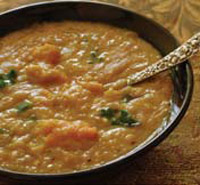40 Days and 40 Nights
Instead of giving up something for Lent, try integrating something positive into your life
 Mardi Gras is crazy-early this year. There are exactly five weeks between New Year’s Day and Fat Tuesday, which obviously leaves us New Orleanians with no other option than to party nonstop from the holidays through Ash Wednesday. Thank goodness for the cleansing of Lent, right?
Mardi Gras is crazy-early this year. There are exactly five weeks between New Year’s Day and Fat Tuesday, which obviously leaves us New Orleanians with no other option than to party nonstop from the holidays through Ash Wednesday. Thank goodness for the cleansing of Lent, right?
In the 40 days leading up to Easter, the familiar question is “What are you giving up this year?” Answers may vary, but they’re usually along the line of forgoing alcohol, soft drinks or candy.
Ever notice that the emphasis is on giving up something bad? How about the idea of adding something good?
According to Father Mark Raphael, formerly of St. Robert Bellarmine in Chalmette and one of the coolest priests I know, it is “perfectly consistent with Lenten spirituality to add something positive in, in the place of giving something up.” He also notes that Lent can be considered an “annual time of self-improvement through removing destructive things from our life, and adding more positive aspects to our life.”
So this Lenten season, instead of focusing on deprivation and denial, consider integrating a beneficial habit into your lifestyle. Here are a few suggestions:
- Schedule regular exercise into your day
- Make time for a healthful breakfast
- Plan nutritious afternoon snacks
- Remember to take your vitamins
- Drink more water
- Set aside more time for friends that pass on a positive energy
- Make it a point to laugh freely and often
- Stretch for 10 minutes every morning and every night
Dear Molly,
If the orange juice label says “not from concentrate,” does that mean it’s better for you than orange juice that’s from concentrate?
Christian Bruno, a curious 11-year-old
Hi, Christian,
Great question! This is one that even I didn’t know the full story on, so I double-checked with my LSU Food Science professor, Dr. Sam Godber, to be sure!
Here’s the (not-so-short) answer:
When fruit juice is “from concentrate,” it means that the water was evaporated from the juice. The big juice companies then add water back to it and sell it as 100 percent orange juice. Apparently, it’s much cheaper to store and transport this way.
During this process, some of the flavor can be lost, so those juices that are “not from concentrate” often taste better to people.
As for the difference in nutrient content, that’s not an easy call. The processing of “from concentrate” juice can result in the loss of some nutrients. However, it’s also possible that “not from concentrate” juice loses some nutrients during storage and transportation because it’s exposed to heat and light. In fact, the USDA nutrient database shows that “not from concentrate” juices have more vitamin A and potassium but lower amounts of vitamin C and folate.
It’s also important to be aware that all types of fruit juice, even 100 percent “not from concentrate”
juices, are high in sugar. In fact, the serving size for juice is a mere four ounces or half a cup. The bottom line? It’s generally a better idea to eat the fresh fruit instead of drinking the fruit juice. You’ll get the same nutrients, with less sugar and more fiber.
 Recipe
Recipe
Split Pea Soup
Servings: 6
2 cups onion, finely chopped
1 cup celery, finely chopped
1 cup carrots, finely chopped
2 tbsp olive oil
1 tbsp thyme
1 tbsp basil leaves
1/2 gallon reduced sodium chicken broth
1/2 gallon water
1 pound dried split peas
1 tbsp garlic powder
Salt and pepper to taste
1 slice whole wheat toast (cubed) for garnish
Directions:Sauté onions, celery, and carrots with olive oil until tender. Add thyme and basil. Then add chicken broth and split peas. Bring to boil and add garlic powder. Simmer for one hour then add salt and pepper to taste.
Nutrition Facts per Serving:
200 calories, 36 g carbohydrates; 6.5 g fiber, 10 g protein, 4 g fat.
